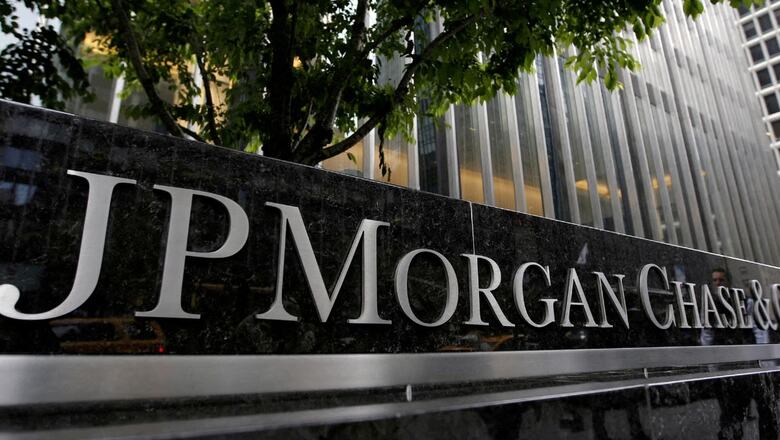
views
A quiet transformation that has gone less noticed in India is that of its debt market which is in for a big overhaul. Strong growth story, reforms in the debt market, and decisive leadership of the Narendra Modi government have created fresh opportunities for foreign investors in the nascent debt market with potential and promise.
After years of intense negotiations, Indian sovereign bonds will make it to Bloomberg and JPMorgan’s emerging markets index. Getting benchmarked on these two indices would lead to about $30 billion in inflows into Indian debt paper that’s largely confined to government banks and financial institutions.
US bank JPMorgan recently announced the inclusion of 23 government bonds worth $330 billion on its emerging markets index. This will be staggered out over ten months beginning June 28, 2024, to March 2025. Close on the heels, Bloomberg Index Services has given a firm hint that Indian bonds will be part of its indices globally.
While Bloomberg reported discussions with its clients which are largely banks and investment companies, JPMorgan has more or less completed this exercise. As per reports, large investors in government debt internationally expected Bloomberg to include Indian bonds in the first quarter of the next fiscal in India beginning April 1, 2024.
The inclusion of Indian treasury-issued rupee-denominated bonds under fully accessible route (FAR) is part of JPMorgan and Bloomberg indices, which would lead to large global investors taking big exposure in Bharat’s paper.
Reserve Bank of India (RBI), Bharat’s central bank in consultation with the Indian government, had opened a new channel named Fully Accessible Route (FAR), through which non-resident investors were permitted to invest in specified Indian securities without caps. This foreign investors’ window was formally opened in 2020.
In the indexation of JPMorgan and Bloomberg, Indian bonds are set to get maximum weightage of 10 points globally and 8.7 points in emerging markets indices.
India’s Finance Minister Nirmala Sitharaman is right on track when she says that stability, policy consistency and reforms have made Bharat’s famed growth story all the more robust and sustainable.
With the emergence of India as a strong manufacturing hub for top companies like Apple, Nokia, Boeing, Samsung and Amazon, equity markets have turned ebullient with fresh equities investments moving away from China.
A similar situation is getting unravelled in the debt market with investors shifting away from China, which is struggling to keep its growth estimates — short and medium-term — positive and healthy given hiccups in the post-Covid-19 recovery. In contrast, India is expected to log the fastest growth in the next two years with 6.1 per cent in 2023 as per the International Monetary Fund. This weighs against the US’ 1.8 per cent and global aggregate of 3 per cent.
China losing steam, Russia taken out of the indices following the Ukraine war and healthy economic growth in India has egged foreign investment firms, rating agencies and large banks to look at Bharat’s debt paper eagerly. Finance Minister Sitharaman may have been a wee bit conservative when she projected inflows of US $23 billion after the inclusion of Indian debt paper on the JPMorgan Bond Index. Goldman Sachs, the prominent US investment bank and services company, has however projected $30 billion in 2023-24 when top investors rebalance their exposure internationally.
Chinese debt paper was in demand way back in 2019. Of late, Chinese paper has begun to lose support given its shaky economic fundamentals which may translate into a larger interest in the Indian debt market. Hitherto, treasury debt paper was largely restricted to government-owned banks and financial institutions while a very small chunk was available for retail investors and mutual funds.
Foreign investors seem to be factoring in huge infrastructure investment plans rolled out by the Narendra Modi government. And the second factor that may propel rebalancing their exposure is the outcome of legislative assembly elections in five states followed by Parliament polls before June 2024. The projected manifold increase in foreign funds flow into India’s debt paper goes well with the ‘on the ascent’ narrative of Narendra Modi’s ruling BJP and its allies that have begun a spirited campaign ahead of states and federal elections.
No doubt that RBI and the Indian government are experimenting big by enabling foreign investors to take large exposure in Indian paper. This may eventually translate into RBI losing some flexibility in money policy formulation and shifting to market-led dynamics.
One cannot ignore the contrarian view as well. Foreign investors taking exposure worth US $25-30 billion in government stock of over Rs 100 lakh crore or US $1.2 trillion is too little and too late. If one were to factor in fresh borrowing of Rs 1.65 lakh crore each year, these inflows would add depth to the Indian debt market without having a material impact on monetary policy formulation in the near future.
The unanimous view, however, is the robustness, inclusiveness and sustainability of India’s growth story built on strong economic fundamentals. The financial community’s confidence in the Indian story reaffirms that doves are back in droves.
The author is Director & Chief Executive at New Delhi-based non-partisan think tank, Centre for Integrated and Holistic Studies. Views expressed in the above piece are personal and solely that of the author. They do not necessarily reflect News18’s views.


















Comments
0 comment